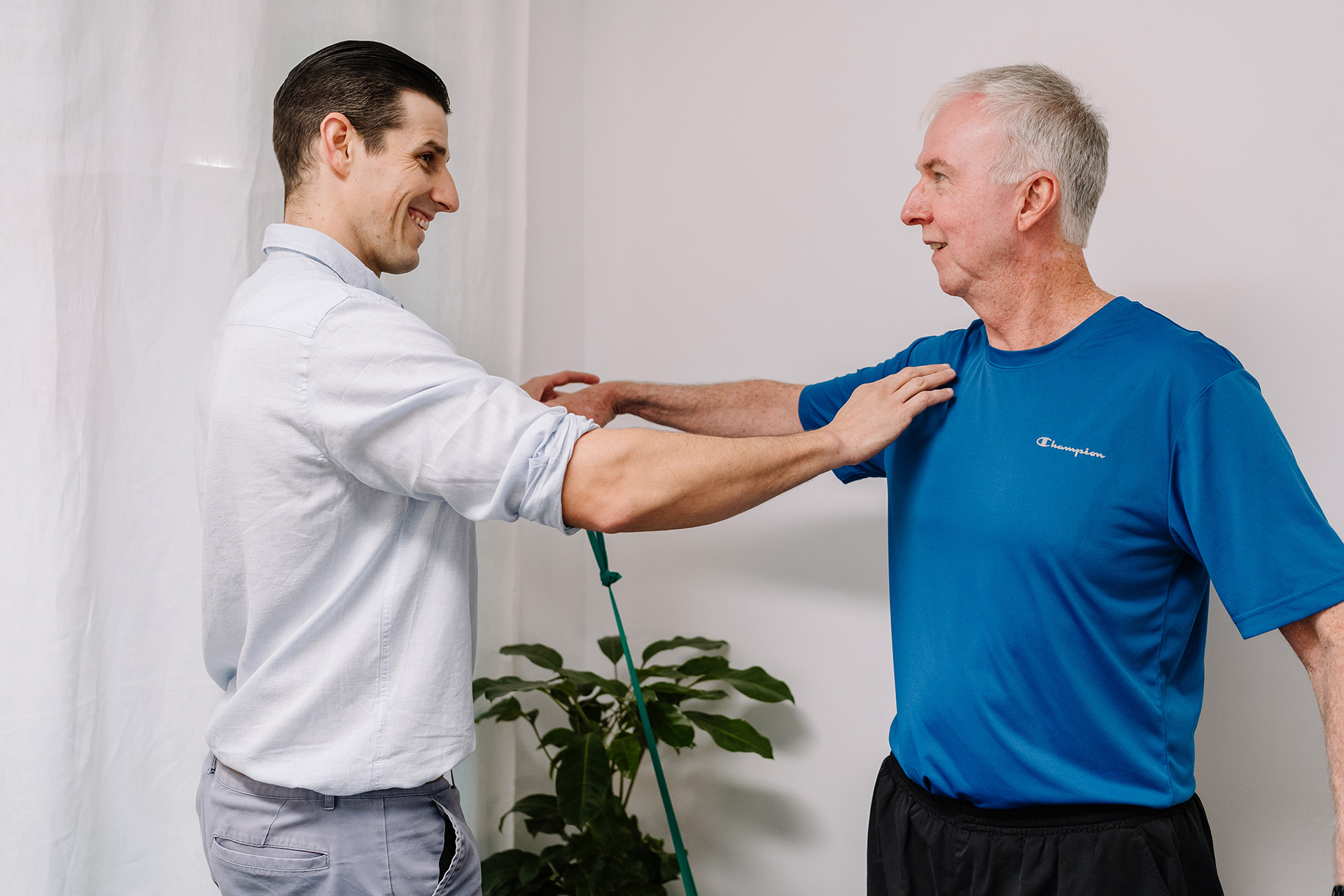Ph: (07) 5238 4000 | Email: info@osteophi.com.au

Osteopathy may be a term you’ve come across before, but perhaps you’re not quite sure what it involves or how it might help you. As a manual therapy that takes a whole-body approach, osteopathy works to support the body’s natural healing abilities by focusing on its structure and function.
Whether you’re dealing with pain, stiffness, or reduced mobility, understanding how osteopathy works can open the door to new possibilities for managing your health. In this blog, we’ll delve into what osteopathy is, how it works, and when it may be beneficial for you.
Osteopathy is a form of manual therapy that considers the body as a whole, aiming to improve how its systems—such as the musculoskeletal, nervous, and circulatory systems—interact. It is based on the principle that a well-aligned and balanced body may better support self-healing and overall well-being.
Osteopaths use a variety of hands-on techniques, such as stretching, soft tissue massage, and joint mobilisation, to address imbalances and areas of tension. Rather than focusing solely on symptoms, osteopathy seeks to identify and address contributing factors that may underlie discomfort or dysfunction.
Osteopathy works best when integrated into a comprehensive approach to health, complementing other treatments and lifestyle modifications.
Osteopathy treatment focuses on the neuro-musculoskeletal system, which includes the bones, muscles, nerves, and connective tissues that support and move the body. Through a combination of hands-on techniques, personalised exercises, and holistic advice, osteopaths aim to address imbalances and promote overall well-being.
What’s Involved in Osteopathy?
● Manual Therapy: Techniques such as soft tissue massage, joint mobilisation, and stretching aim to reduce tension, improve mobility, and support better alignment.
● Exercise and Movement Guidance: Tailored programs help strengthen muscles, enhance flexibility, and support recovery.
● Postural and Ergonomic Advice: Osteopaths may provide practical tips for reducing strain during daily activities.
● Therapeutic Needling: Some osteopaths use dry needling or trigger point therapy to address muscle tension.
● Holistic Support: Guidance on lifestyle, stress management, and diet helps clients address factors that may influence pain or movement.
By combining these approaches, osteopathy aims to support the body’s natural healing processes and promote better movement and function. Each treatment is carefully tailored to meet the individual needs of the client, focusing on long-term health and well-being.
Osteopathy may be a helpful approach for managing pain, improving mobility, and supporting overall function. Here are some examples of conditions and issues where osteopathy may assist:
Pain Management
Osteopathy may help with managing discomfort associated with:
● Neck pain
● Back pain
● Shoulder pain
● Elbow pain
Manual techniques, such as soft tissue massage and gentle mobilisation, aim to address tension and encourage improved function in affected areas.
Mobility and Function
Osteopathy may also be useful for individuals recovering from injuries, surgeries, or work-related strain. It may help with improving movement, reducing stiffness, and supporting recovery.
Prevention and Maintenance
In addition to addressing specific concerns, osteopathy may assist in maintaining general health by identifying areas of strain or tension before they develop into more significant issues.
What Does the Evidence Say?
Research supports the potential benefits of osteopathic care for a range of conditions. For example, a systematic review conducted by Khalaf et al. examined the effectiveness of osteopathic treatment in response to a number of health concerns. The study found strong evidence to suggest osteopathy may assist with managing lower back pain, sciatica, neck and shoulder nerve pain, and ankle sprains.
Evidence was also identified for osteopathy’s potential to help with tension headaches, jaw pain (TMJ disorders), pain relief for endometriosis, and back or pelvic pain during pregnancy.
These findings suggest osteopathy can be a valuable part of a holistic approach to managing health and well-being. However, it’s important to note that individual outcomes vary, and osteopathy is best considered as part of a comprehensive treatment plan.
Find out more
Curious about whether osteopathy could be helpful for you? Contact Osteophi to discuss your options with one of our qualified osteopaths.
Disclaimer
All information is general and not intended as a substitute for professional advice. Osteophi can consult with you regarding your individual health needs.

Donec tristique sollicitudin sem et eleifend. Donec tristique sollicitudin sem et eleifend. Cras nec porttitor metus, in vulputate quam id ligula venenatis lacinia. Cras nec porttitor metus, in vulputate quam id ligula venenatis lacinia.
Lorem Ipsum is simply dummy text of the printing and typesetting industry. Lorem Ipsum has been the industry’s standard dummy text ever since the 1500s, when an unknown printer took a galley of type and scrambled it to make a type specimen book.